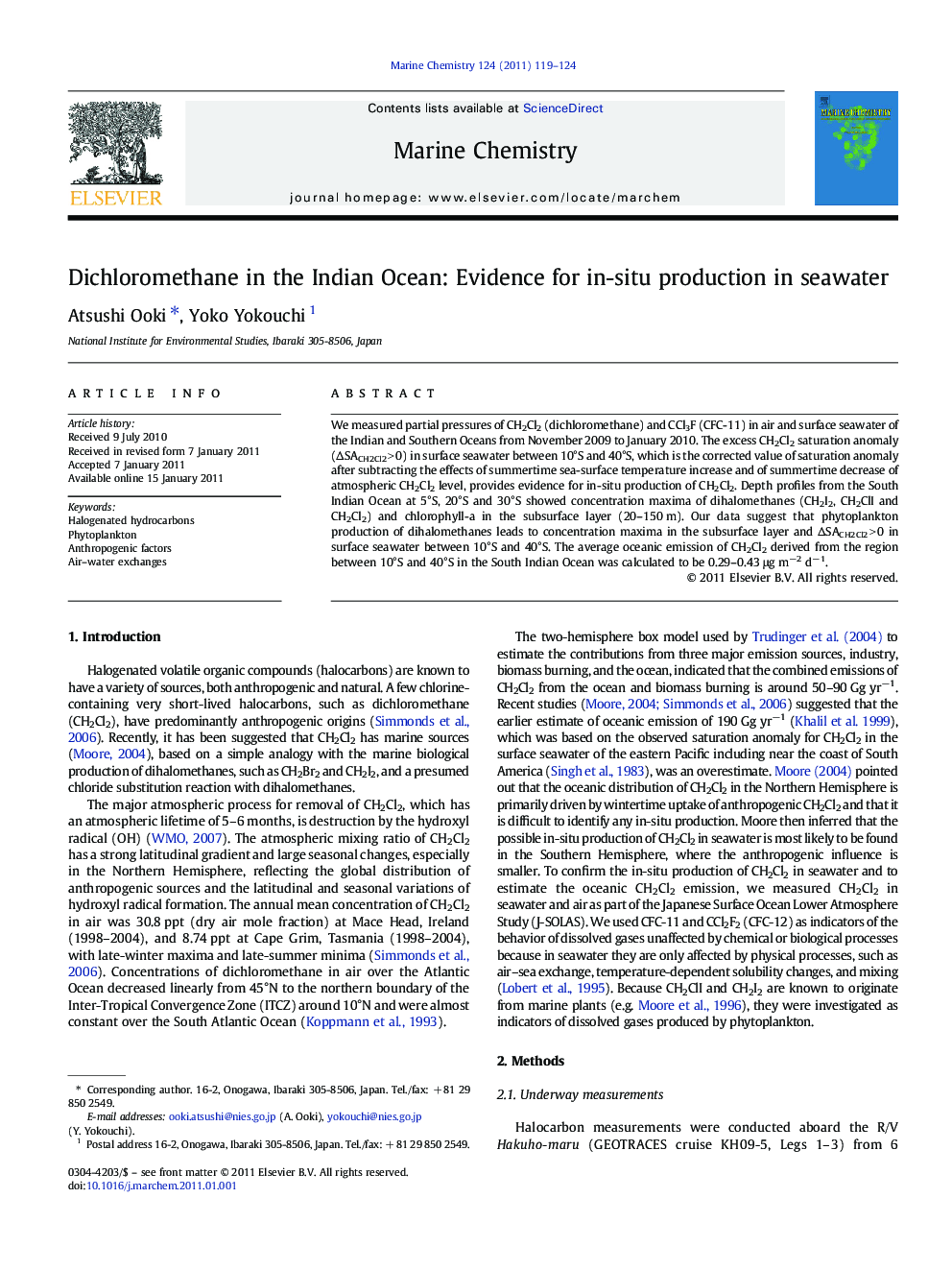| Article ID | Journal | Published Year | Pages | File Type |
|---|---|---|---|---|
| 1262105 | Marine Chemistry | 2011 | 6 Pages |
We measured partial pressures of CH2Cl2 (dichloromethane) and CCl3F (CFC-11) in air and surface seawater of the Indian and Southern Oceans from November 2009 to January 2010. The excess CH2Cl2 saturation anomaly (ΔSACH2Cl2 > 0) in surface seawater between 10°S and 40°S, which is the corrected value of saturation anomaly after subtracting the effects of summertime sea-surface temperature increase and of summertime decrease of atmospheric CH2Cl2 level, provides evidence for in-situ production of CH2Cl2. Depth profiles from the South Indian Ocean at 5°S, 20°S and 30°S showed concentration maxima of dihalomethanes (CH2I2, CH2ClI and CH2Cl2) and chlorophyll-a in the subsurface layer (20–150 m). Our data suggest that phytoplankton production of dihalomethanes leads to concentration maxima in the subsurface layer and ΔSACH2Cl2 > 0 in surface seawater between 10°S and 40°S. The average oceanic emission of CH2Cl2 derived from the region between 10°S and 40°S in the South Indian Ocean was calculated to be 0.29–0.43 μg m−2 d−1.
Research Highlights► Latitudinal distribution of CH2Cl2 in surface seawater was measured in Indian Ocean. ► High saturation state in 10°S–40°S indicated the in-situ production in seawater. ► We found the evidence for phytoplankton production of CH2Cl2 from a vertical profile. ► The sea-to-air flux of CH2Cl2 derived from phytoplankton was estimated.
